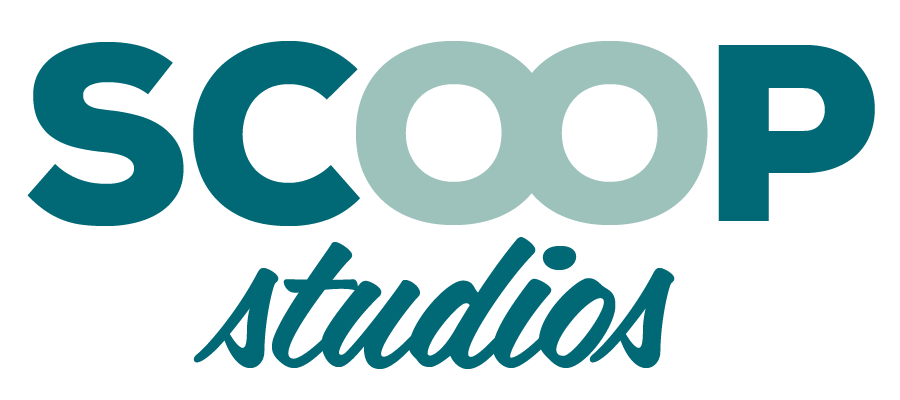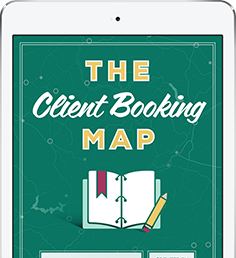We all spend a lot of time on our marketing and promotion, hoping to close the sale. But it’s way too easy to get caught up in blogging and putting pretty things on Instagram and end up skipping over the core systems that take people out of your community and turn them into paying clients.
Let’s face it – selling can be scary. We’ve all got hang ups and stories when it comes to selling – from being pushy to just not being “good” at it. When you take the time to map out solid systems for selling your products or services, you can strip away all the negative self-talk and just focus on getting it done.
Here are three sales systems that, if you can master them, you will close more sales in the coming year.
#1. Free Consult Calls
Boundaries are commonly discussed in online business circles as a must-have. While I agree, there’s a point when too many boundaries are actually detrimental to your business.
People hire people, and they need to be able to connect with you in order to hire you. It’s not unreasonable at all for people to want to have a quick chat with you before they hand over their hard earned dollar bills, especially if you’re providing a service.
Plus, a consult call is just as much for you as it is for your would-be client. I personally don’t want people hiring us for high-end services without a consult call first – ever. That’s a recipe for mismatched expectations and poor personality fit.
On the flip side, maybe you’re too generous with your consult calls and you may spend a lot of free time on consults that go nowhere and you feel like you’re wasting your time.
Or perhaps you actually end up giving potential clients a free strategy session. Repeat after me – consults are for selling so save the strategy for when they’re paying you. (Don’t even get me started on people who want “creative” ideas on a consult call.)
So, how do you make the most of your consult calls?
Above all else, you need to make sure that you’ve got a clear goal in mind for your free consults. Before you hop on Skype, you want to have a plan for how they go from the free consult to working with you.
One of the biggest mistakes business owners make is just getting on the phone with anyone and everyone. (Yay! Someone is interested! Maybe they will buy something!)
It’s lovely for people to get to know you, but you can’t be surprised that people aren’t turning into paid clients from consults if you have a standing offer to let them pick your brain.
A free consult should not be about maybes. If you’re investing time to get on the phone, you want to make sure that there’s a reasonable chance of them actually working with you. You want them to be at least 75% sold that you’re a good fit for what they need.
Questions to answer about your consult process:
- Communicate clearly the purpose of your free consults. Ideally, they should be to find out more about working with you. (Hint: They should be reserved for pre-qualified potential clients.)
- Create specific blocks of time on your calendar for free consults. Use a tool like ScheduleOnce or Calendly to automate the process.
- Be specific before the call on what they can expect. Setting expectations about what you’ll talk about and for how long can help you make the most of your time.
#2. Have a Clear Path to Purchase on Your Website
You can promote, promote and promote some more, but if people can’t easily buy from you, all of your promotion is pointless. Harsh. But true.
There are many points of failure in the sales process on a website which we tend to overlook as we’re too close to our offerings. Which is where some basic systems come in. While I could write an entire 52-week series on this topic, let’s hit a few of the highlights:
Make buying from you easy. And by easy, I mean dead simple. A few common barriers to people doing business with you:
- Too many clicks to find the information. (Don’t make me work so hard.)
- Confusing or unclear pricing.
- No easy way to contact you.
- Unclear next steps or what to expect.
If people are considering hiring you to provide a service, you need to clearly communicate exactly what they can expect from you once they hit “buy”. For example, if they’re considering a specific package, answer the question “what happens next?” before they start to wonder. (Just be sure not to drown them in too many details either.)
If people can book services directly from your website, your client intake system is a big part of the customer experience. If you carefully articulate the what’s next, typical timelines and more, you can eliminate any concerns. Having these details front and center will ultimately make people feel more confident in doing business with you.
Questions to answer about your website:
- What system do you use for payment/checkout? Do you offer PayPal and an easy way to pay immediately? (Muy importante for services that can be booked from your site.)
- Do you have “easy to find and understand” sales pages? (Yes, sales pages are a system – they funnel people into your offering and pre-qualify potential clients.)
- What system do you have in place after they hit buy? What happens next? Do they book a session? Get intake paperwork? If you can automate this, all the better and for heaven’s sake don’t leave your new client hanging.
#3. Perfect Your Pricing & Proposals
Depending on your type of business, you may be in a situation where you need to develop pricing and proposals for projects or ongoing work.
At the point where you have someone interested enough that you’ve had a consult and you’re preparing a proposal, you want to nail this. You’re nearly on the way to sealing the deal – so you need to do the work to close this client!
While your pricing and proposals should be customized to the specific client and their needs, there are a number of ways to systematize your process so you aren’t reinventing the wheel each time.
For example, here at Scoop, every proposal we create has templated common elements such as “what to expect” and “budgets” sections. If you want to streamline that process even further, consider using a tool like BidSketch or an all-in-one system like Dubsado that makes creating your proposals dead easy.
If you want to take it up a notch, design a professional looking, standard template for your proposals. How you present this information is important and you need it to be a little more than an unformatted Google Doc.
Finally, give some thought to your system around delivering proposals. Creating a workflow that goes from the consult to signing on the dotted line will help you nail it every single time. A few items to cover off:
- How fast will you deliver a proposal following a call? You should deliver quickly and communicate that timeframe to your prospect. (More than a few days is WAY too long and signals you’re too busy to take them on as a client.)
- What happens after the proposal is sent? If they accept, what happens next? In my case, they get a contract and an invoice for a deposit.
- How do you onboard them? Do they schedule their first call? Get an intake form?
Systems for your pricing and proposals:
- Create a system around your proposal process. Map out all the steps from consult to successfully onboarding a new client.
- What common elements can you standardize for proposals? Create them and set up a system.
- What’s your timeline for delivery, acceptance and more of proposals? Have a standard process and plan for it whenever you book a consult.
Creating systems may seem tedious, but if you can invest time upfront to help you book more clients, it will be well worth it. Your sales systems will deliver ROI quickly so schedule time in the next few weeks to tackle at least one of these systems.
[embed_popupally_pro popup_id=”9″]


